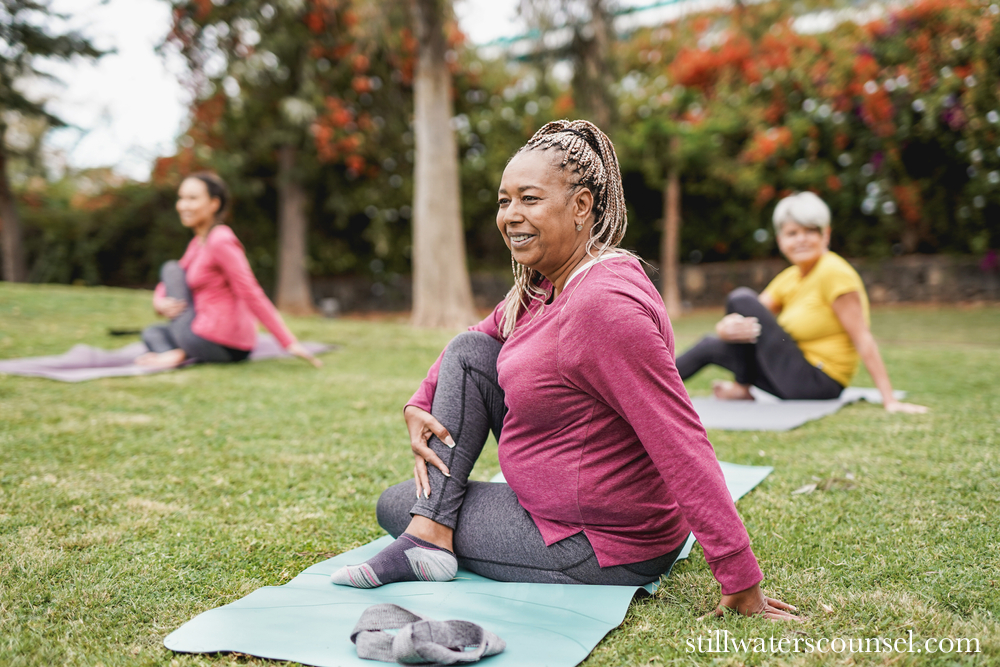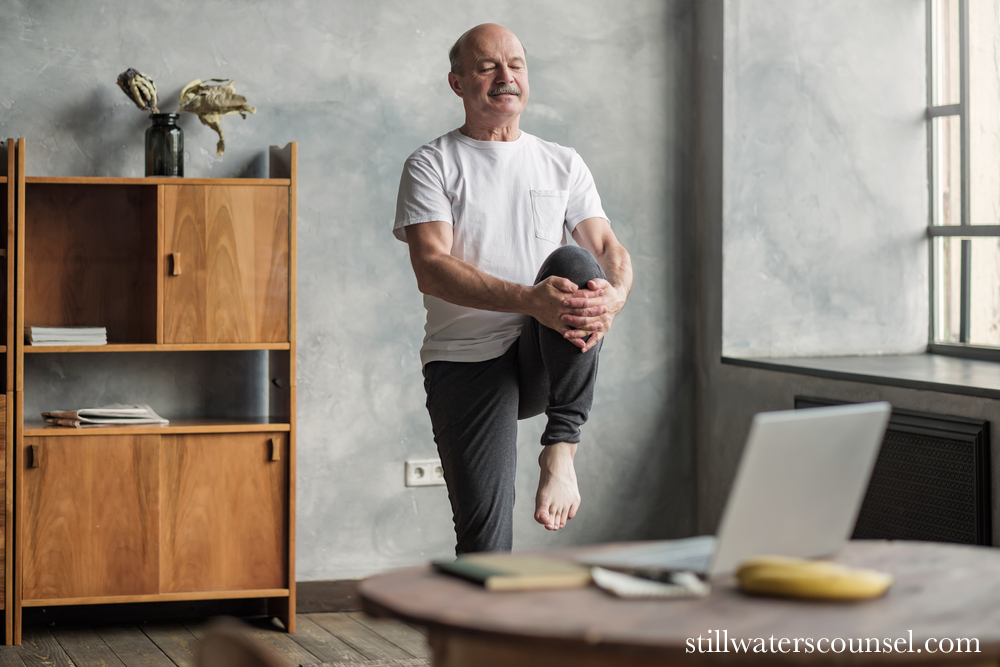
If ever a true panacea for both physical and mental health existed… it would be exercise. Moving on a regular basis is by far the best/easiest/most reliable way to improve your mood, cognitive abilities, and overall physical health. In fact, the holy trifecta of mental health treatment for many concerns is therapy, medication, and (you guessed it) EXERCISE!
Let’s talk through why exactly that is.*
1. Improved blood flow
This is maybe obvious… if you move more and get your heart rate up a little bit, more blood will naturally be flowing through the blood vessels. But let’s walk through the implications of that. What does it mean when you get more blood flow to crucial organs like the brain, liver, kidneys, etc? More nutrients get to these organs, and more waste products are carried away. These organs get more of what they need, with the opportunity to dump what they don’t. Which means your liver is better able to do its job of detoxification; the brain gets to think better; kidneys circulate more fluid. Win win win win win.
2. Improved blood chemistry
Along with the organs, when you move more, your muscles claim their fair share of increased blood flow. Not only that, but simply the act of contracting a skeletal muscle helps to move sugar into the muscle so that it can be used as the fuel it’s intended to be. Which equals better blood sugar. Blood lipids (cholesterol, triglycerides, etc) also tend to improve with regular exercise. This means that the risk of developing illnesses like diabetes or heart disease are diminished. If you already are living with these issues, exercise can play a huge role in healthy management of them.
3. Improved cognitive function
Remember that whole increased blood flow to the brain = more nutrients getting there + more waste leaving thing? Yeah, that helps cognition for sure. But something else happens with regular exercise, and, while we’re not quite sure why, it packs a huge punch in the brain health game. It’s BDNF. AKA Brain Derived Neurotrophic Factor. BDNF is sort of like a nanny or tutor to the brain cells. It makes sure they have what they need to do what they need to do. It helps make sure they’re making good connections with other brain cells. In other words, it REALLY helps cognitive function. Meanwhile, this isn’t a chemical you can take as a supplement – the best way to boost it up is to get moving on a regular basis.

4. More robust metabolic functions
Put another way, regular exercise (resistance training, or weight lifting especially) makes your mitochondria stronger. Perhaps you remember the whole ‘mitochondria is the powerhouse of the cell’ thing. Indeed they are, and, the more you use your muscles, the more the shape up to do their job better. Which means you’re getting more energy output for what you’re putting in.
5. Better sleep
Sleep improvement with regular exercise is likely attributable to many factors. Getting blood sugar regulated, using the energy that’s available. If you’re exercising outside and getting natural sunlight in the AM hours, that’s helping to keep the circadian rhythm on track, which in turn supports healthy sleep. Additionally, many of us are dealing with chronic daily stressors (Who’s picking up the kids? What’s for dinner? What is this bill for? Why on earth is gas so expensive???), and moving the body helps to clear excess stress hormones (cortisol, adrenaline) from the bloodstream. Oversimplified translation: less stress, better sleep.
Now, ‘exercise’ is a loaded word for many folks, conjuring stressful moments on the kickball field or dodging giant rubber balls unsuccessfully (just me?). Many folks in larger bodies feel they don’t belong in fitness spaces – they do. Absolutely, hands down. What matters when we’re talking exercise is regular movement in a way that (gasp) you enjoy. You don’t need to hit the gym for 2 hours a day – start small, in a way that you can sustain for a few months. Once you’ve got that locked in, see how you might increase the intensity and/or duration of your activity. And so on.
Pro tip: if you hate running, umm, don’t run! Check out the local skating rink, or go for a swim instead.
Like walking? Go enjoy some walks!
Going from nothing to something is going to yield tremendous benefit. Going from something to a little bit more? Same same. Here’s a brief list of activities to get you started: walking, running, roller skating/blading, biking, swimming, pilates, yoga, using resistance bands, lifting weights, taking a fitness class a couple times per week, hiking, pickle ball, tennis, rock climbing, rowing, rucking, playing tag with the kids, frisbee…
Alright, stop reading, get moving!
*For informational purposes only; please work with a qualified healthcare professional for your specific needs.
